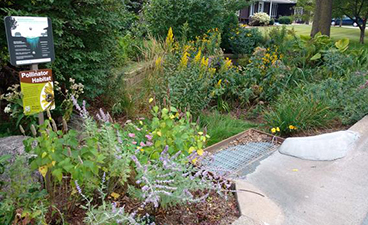
Infiltration facilities are a common and very useful means of regulating stormwater runoff, but the installations stand a relatively high chance of failure if they are improperly sited or monitored. U researchers developed tools to help designers and planners mitigate this problem.
Any construction that involves one or more linear acres of impervious surfaces—including transportation and municipal engineering projects—is required by the Minnesota Pollution Control Agency to control and treat stormwater runoff. Infiltration facilities, which mimic the natural processes of infiltration and evapotranspiration, are the first choice that the MPCA prescribes to do this.
These infiltration facilities, however, have a high rate of failure—observed between 10 and 50 percent. This has two main causes: improper siting of the facilities and insufficient understanding of the site’s ability to infiltrate water (hydraulic conductivity). Continue reading the full story on Center for Transportation Studies site.